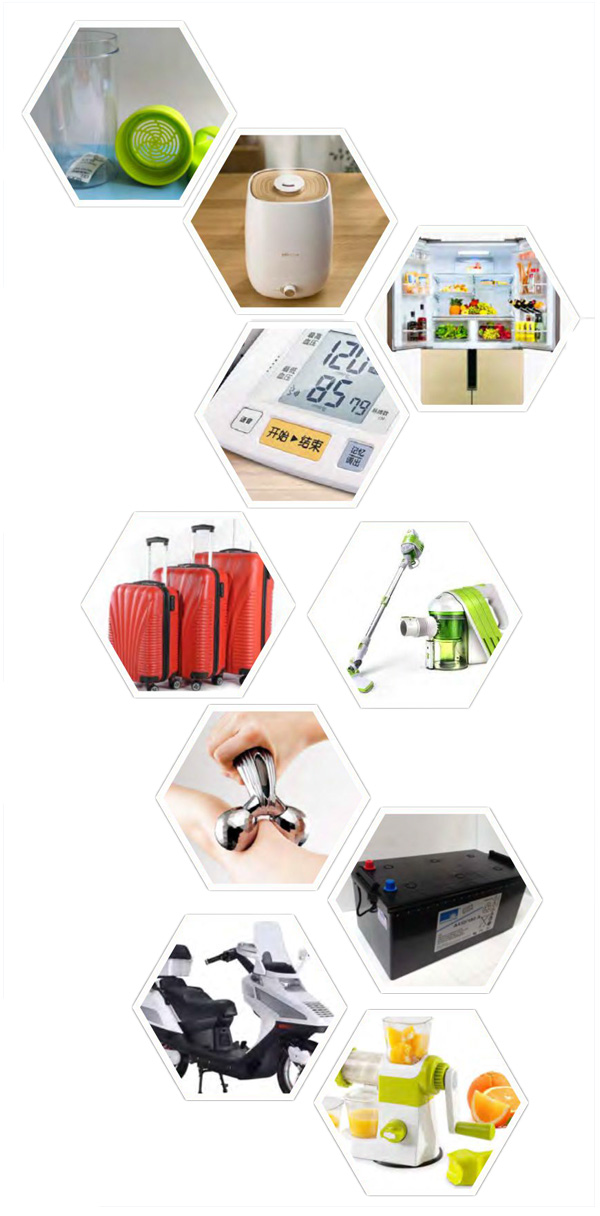Introduction
ABS resin is a terpolymer of three monomers of acrylonitrile, butadiene and styrene, and has the common properties of the three components. Therefore, ABS has good rigidity, high impact strength, good heat resistance, good resistance for low temperature, good chemical resistance, excellent mechanical strength and electrical properties. It is easy for processing, as it has good processing dimensional stability and surface gloss. It is also easy to paint and color, and can also be sprayed, secondary processing such as electroplating, welding and bonding.
The largest application areas of ABS resin are household appliances, office equipment, transportation, daily necessities, toys and building materials. It is also used in packaging, furniture, sports and entertainment, machinery and instrumentation industries.
Plant
Zhejiang Petrochemical adopts the emulsion method technology to build the ABS plant and its corresponding supporting facilities, and the products are mainly high-grade general materials. The total planned production capacity of the project is 1.6 million tons/year, which will be constructed in two phases, and the designed capacity of the first phase is 400,000 tons/year.
ABS Specification
| Specification | General Grade | Plate Grade | Flame Retardant Grade | |
| Production | ZA0210 | ZA0300 | ZA1300 | ZA323A |
| Features | High stiffness. High gloss | High impact resistance | High impact resistance. Extrusion molding | Flame retardance |
| Application | Home appliances. Electronic and electrical products | Helmet, heels, bags etc. | Pipes, refrigerator parts, etc. | Control box, battery, socket, etc. |
Download Catalog
Download ABS Resin Catalog
ABS Resin Physical property
| Physical property category | Testmethod | Test conditions | Unit | ABS General Grade | ABS Plate Grade | ABS Flame Retardant Grade | |
| ZA0210 | ZA0300 | ZA1300 | ZA323A | ||||
| Tensile Strength | GB/T1040.2 | 50 mm/min | Mpa | 47 | 42 | 40 | 38 |
| Flexural Strength | GB/T9341 | 2mm/min | Mpa | 76 | 63 | 61 | 58 |
| Flexural Strength | GB/T9341 | 2mm/min | Mpa | 2700 | 2000 | 1800 | 2000 |
| Izod Impact | GB/T1043.1 | 4mm,23℃ | KJ/m | 20 | 35 | 35 | 20 |
| Vicat Softening Point | GB/T1633B 50 | 4mm | ℃ | 97 | 97 | 97 | 96 |
| Flammability | UL94 | - | - | HB | HB | HB | V-0 |
| Melt Flow Rate | GB/T3682.1 | 220℃,10kg | g/10min | 18-24 | 5-8 | 7-10 | 38-48 |
| Specific Gravity | D792 | - | g/cm | 1.04 | 1.03 | 1.04 | 1.19 |
| Molding Shrinkage | D955 | % | 0.4-0.7 | 0.4-0.7 | 0.3-0.6 | ||
| Features | High stiffness. High gloss | High impact resistance | High impact resistance. Extrusion molding | Flame retardance | |||
Note:
The above data are representative values measured under specific conditions, not guaranteed values. The guaranteed values are the standards of our company for record.
Instructions
| Parameters For Reference | Unit | ABS General Grade | ABS Plate Grade | ABS Flame Retardant Grade | ||
| Drying Temperature | ℃ | 80 | 80 | 70-80 | 70-80 | |
| Drying Time | hrs | 2-4 | 2-4 | 2-4 | 2-4 | |
| Minimum Moisture Content | % | 0.01 | 0.01 | 0.01 | 0.01 | |
| Melting Temperature | ℃ | 210-240 | 210-240 | 200-230 | 200-230 | |
| Barrel Temperature | Back Section | ℃ | 180-200 | 180-200 | 170-190 | |
| Middle Section | ℃ | 190-210 | 190-220 | 180-200 | ||
| Front Section | ℃ | 200-210 | 200-220 | 190-200 | ||
| Nozzle Temperature | ℃ | 200-220 | 200-230 | 200-230 | ||
| Mold Temperature | ℃ | 40-70 | 40-70 | 40-60 | ||
| Back Pressure | Bar | 10-30 | 10-30 | 5-10 | ||
| Screw Speed | Rpm | 30-60 | 30-60 | 30-60 | ||
Note:
(1) The back pressure and screw speed mentioned above are only general guidelines;
(2) In certain cases, such as low-speed injection molding, thin-wall molding and gas-assisted molding, these data may not be applicable or need to be adjusted for use;
(3) In order to prevent the material from degrading in the die before shutdown, or the material flowing out of the extrusion stage, it is recommended that the initial setting temperature be slightly lower.

